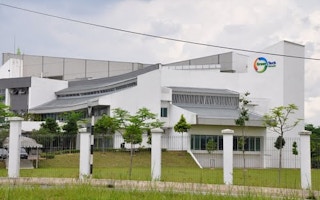The Malaysian Green Technology Corporation (GreenTech Malaysia), the Government’s leading green technology agency, has unveiled a five-year plan aimed at developing the country into a global hub for green technology.
The plan has identified seven key sectors – energy, manufacturing, buildings, information and communications technology (ICT), water, waste and transport – as the initial foundation to advance the development of earth-friendly technology.
“We have redefined our focus areas. Before, we were doing project initiatives. Now, we have a more dedicated focus on where we want to go, and are also exploring new opportunities,” says chief executive officer Ahmad Hadri Haris, who was appointed to the position in April.
GreenTech Malaysia is a not-for-profit agency under the purview of the Energy, Green Technology and Water Ministry, charged with promoting green technology as a new engine for economic growth. Established as Pusat Tenaga Malaysia in May 1998, it was restructured as GreenTech Malaysia in 2010.
Ahmad Hadri says the agency is looking at areas which will have the most impact, and so immediate attention will target the areas of energy, waste, water and transport. To encourage the implementation of green technology in the identified sectors, it will focus on five key areas: promotion and awareness; human capital development; market enhancement; industry growth; and policy and fiscal support.
Among the initiatives being undertaken by the agency are reviews and analysis of national-level frameworks and policies relating to green technology. This includes the development of green townships, an electric vehicle infrastructure roadmap, and the expansion of green ICT projects.
“Green townships will be a goal of the future. And it’s not just about planting more trees, but creating a sustainable ecosystem,” says Ahmad Hadri. He cites the example of the town of Freiburg in Germany, where the infrastructure is designed and built to have low carbon emissions.
The agency is drawing up a low-carbon city framework outlining the steps needed to grow a green city and to measure its environmental impact. Pilot projects are ongoing in Hang Tuah Jaya in Malacca, Petaling Jaya in Selangor, Miri in Sarawak, Universiti Malaya in Kuala Lumpur, Universiti Teknologi Malaysia in Johor and a resort in Tasik Kenyir in Terengganu. The carbon emissions of these places – in the areas of water, land use, building materials and transportation – are now being recorded. This is a crucial first step in order to determine where and how carbon emissions can be minimised in future.
GreenTech Malaysia has also initiated talks with various groups to consolidate and harmonise different green building certification efforts. Apart from Persatuan Akitek Malaysia and the Association of Consulting Engineers Malaysia which had jointly initiated the Green Building Index in 2009, groups such as the Construction Industry Development Board and the Real Estate and Housing Developers Association have expressed plans to draw up certification schemes for green developments and business parks.
GreenTech Malaysia has launched a directory for green products (www.greendirectory.my), making it easier for consumers to track down such goods.
Also, a new eco-label, called MyHijau, is in the works. Currently, various types of green labels exist in the market: Energy Star Rating by the Energy Commission; Skim Organik Malaysia by the Agriculture Department; Malaysian Timber Certification Scheme by the Malaysian Timber Certification Council; and Sirim Eco-Label by Sirim.
Ahmad Hadri explains that the MyHijau programme will pool together the different certification schemes under one logo for easier recognition by consumers. So, a product with an existing eco-label can also carry the MyHijau mark. Talks on this are being finalised with the various bodies. The range of goods which could carry the new logo include electrical appliances, organic food, construction materials, household products, stationery, clothing, paper, agricultural products, sustainable timber and packaging.
To encourage industries and consumers to embrace environmentally sustainable practices, Ahmad Hadri says the Government is showing the way by adopting green procurement. His agency is helping the Finance Ministry draw up the requirements on buying green goods and services, as well as ways to monitor the impact of purchases, for the programme which is earmarked to kick off next year.
As for the electric vehicle roadmap, the agency is studying three areas: the charging infrastructure, public electric vehicles, and an electric vehicle manufacturing hub. A China-made electric bus will be brought in for performance trials in terms of mileage and load capacity. This is because electric vehicles will perform differently in different climates. Other potential areas are technology to better manage freshwater, recycle wastewater, and generate energy from the gases emitted during sewage treatment.
The advancement of green technology has also generated employment, and the agency has launched a portal for green jobs. Citing the case of the solar energy sector, Ahmad Hadri says Malaysia now ranks second globally in photovoltaic manufacturing capacity. The industry has generated direct foreign investment of over RM12bil and generated over 10,000 highly skilled and good-paying jobs.
Meanwhile, 95 projects (mostly in the energy sector) have received assistance in financing amounting to RM1.36bil under the Green Technology Financing Scheme. Launched in 2010, the scheme is to assist companies embarking on green technology projects whereby the Government will provide a guarantee of 60% on the loan amount and bear 2% of the total interest/profit rate charged by the financial institution. Another 250 projects have also received approval for the assistance. GreenTech Malaysia is responsible for screening the eligibility of the projects for the soft loans.
Ahmad Hadri says Malaysia has great potential to become a major producer of green technology for the global markets as we have the strong backing and commitment of the Government, coupled with a quality work force, committed small and medium enterprises, and good public infrastructure.
“On our part, we will continue to play a catalytic role in driving the various initiatives to push the green technology agenda aggressively amongst Malaysian industry players. The opportunities are vast in the green technology industry and part of our role at GreenTech Malaysia is to increase its availability, acceptance and recognition,” says Ahmad Hadri.










